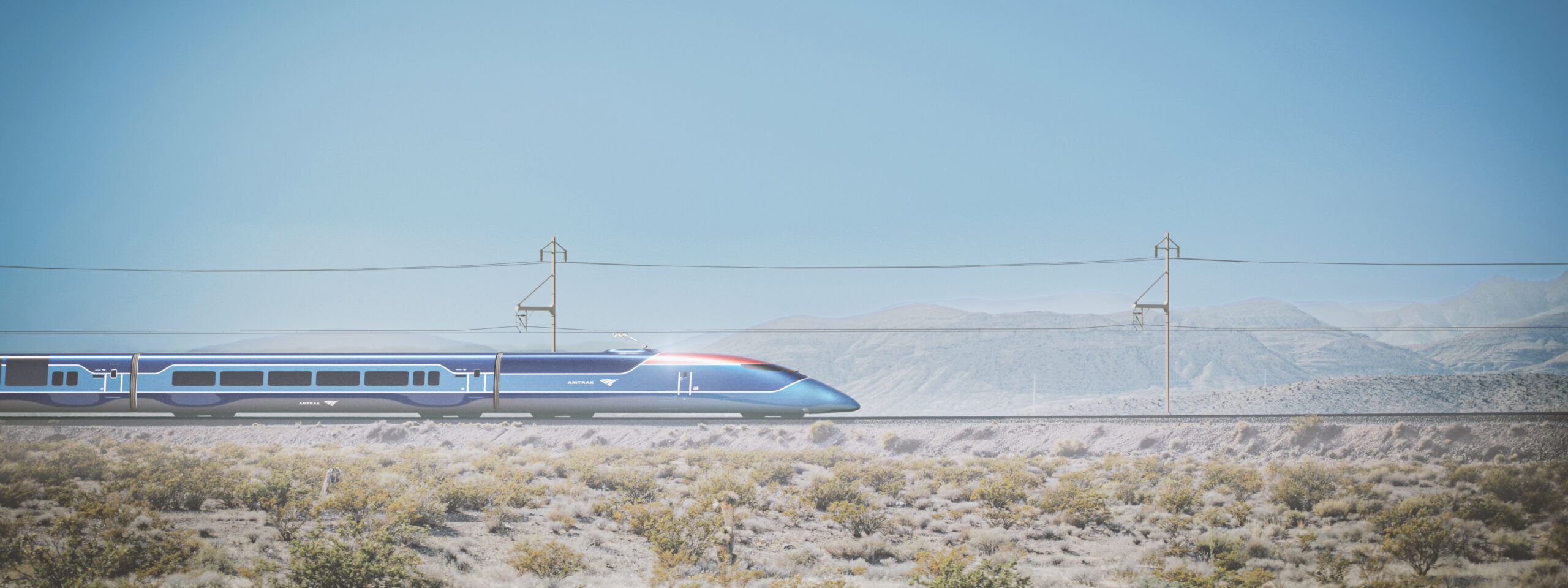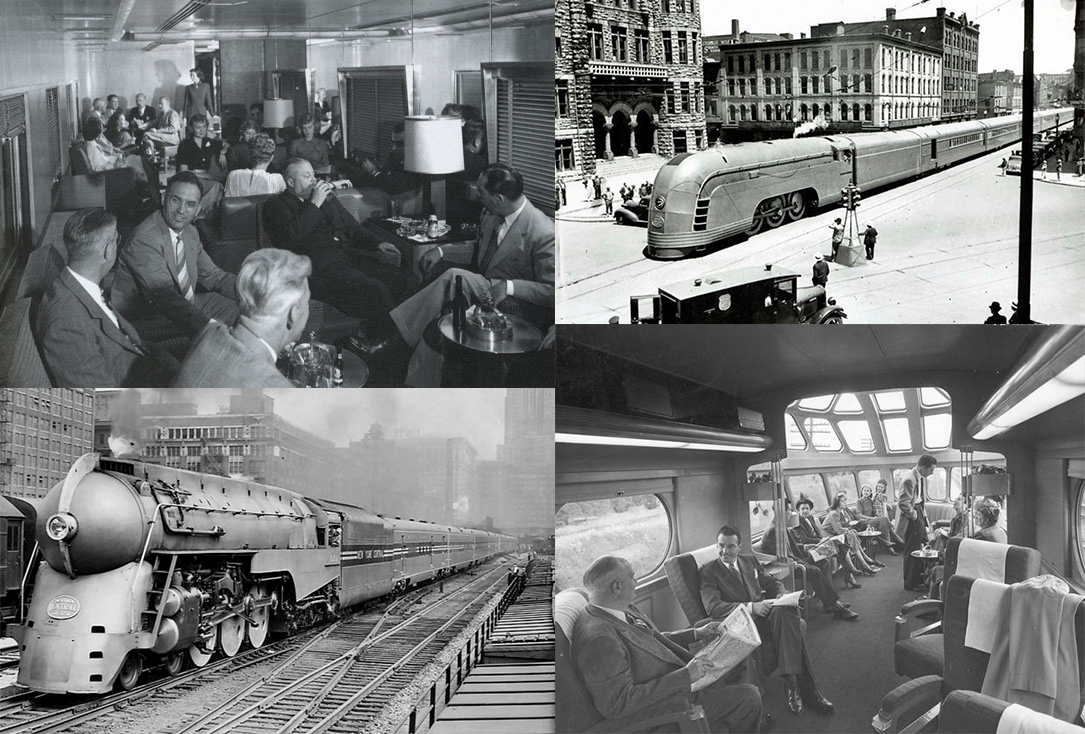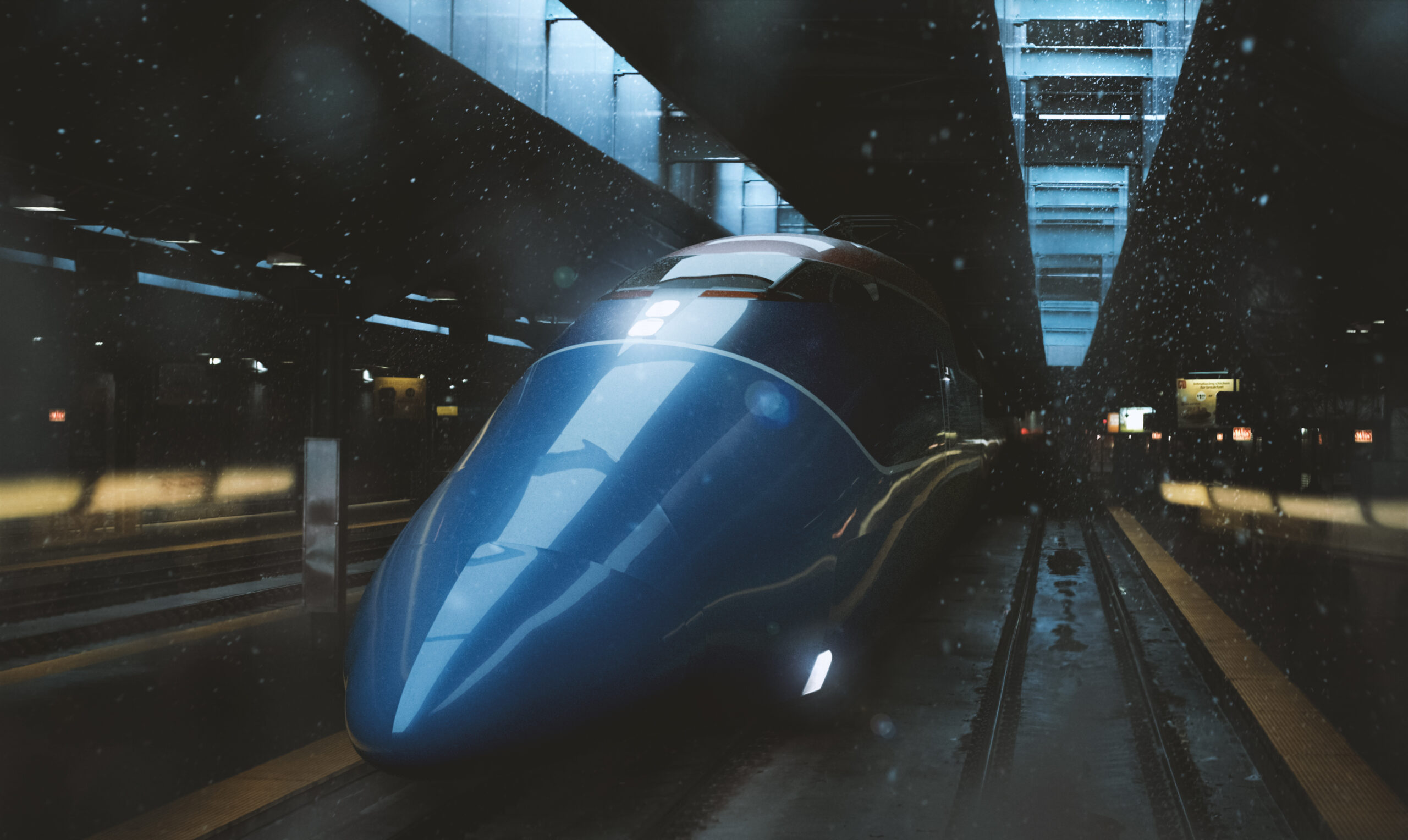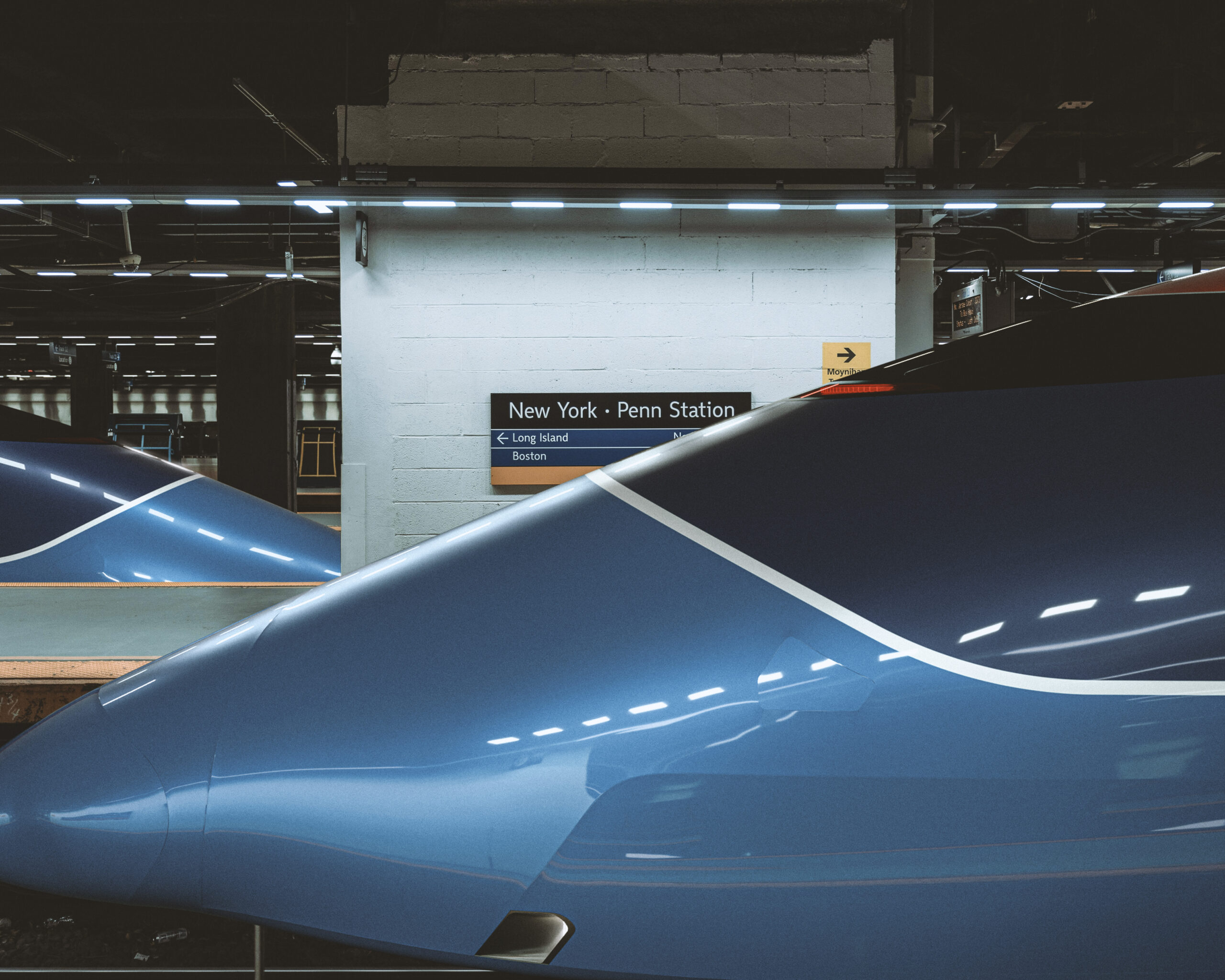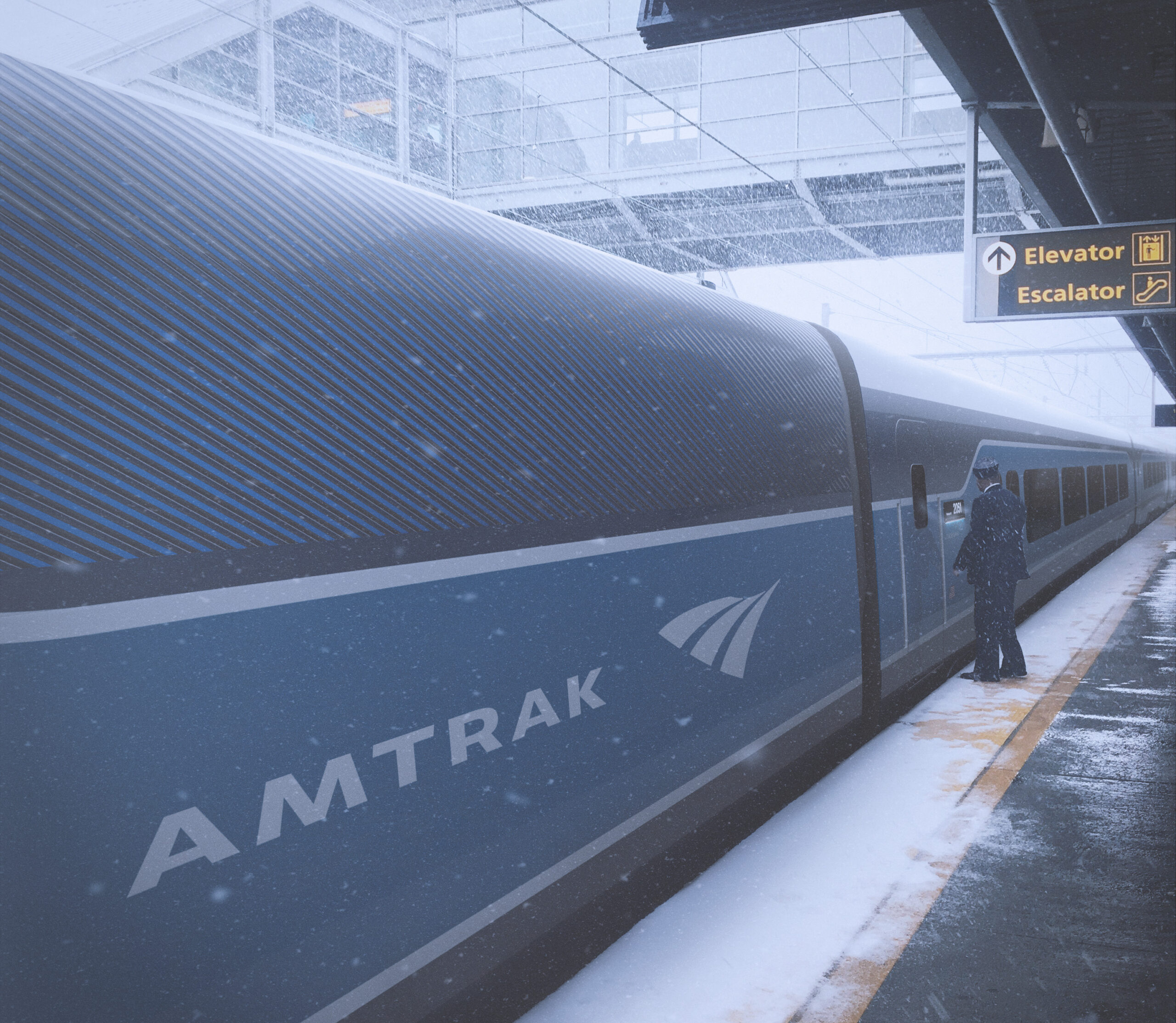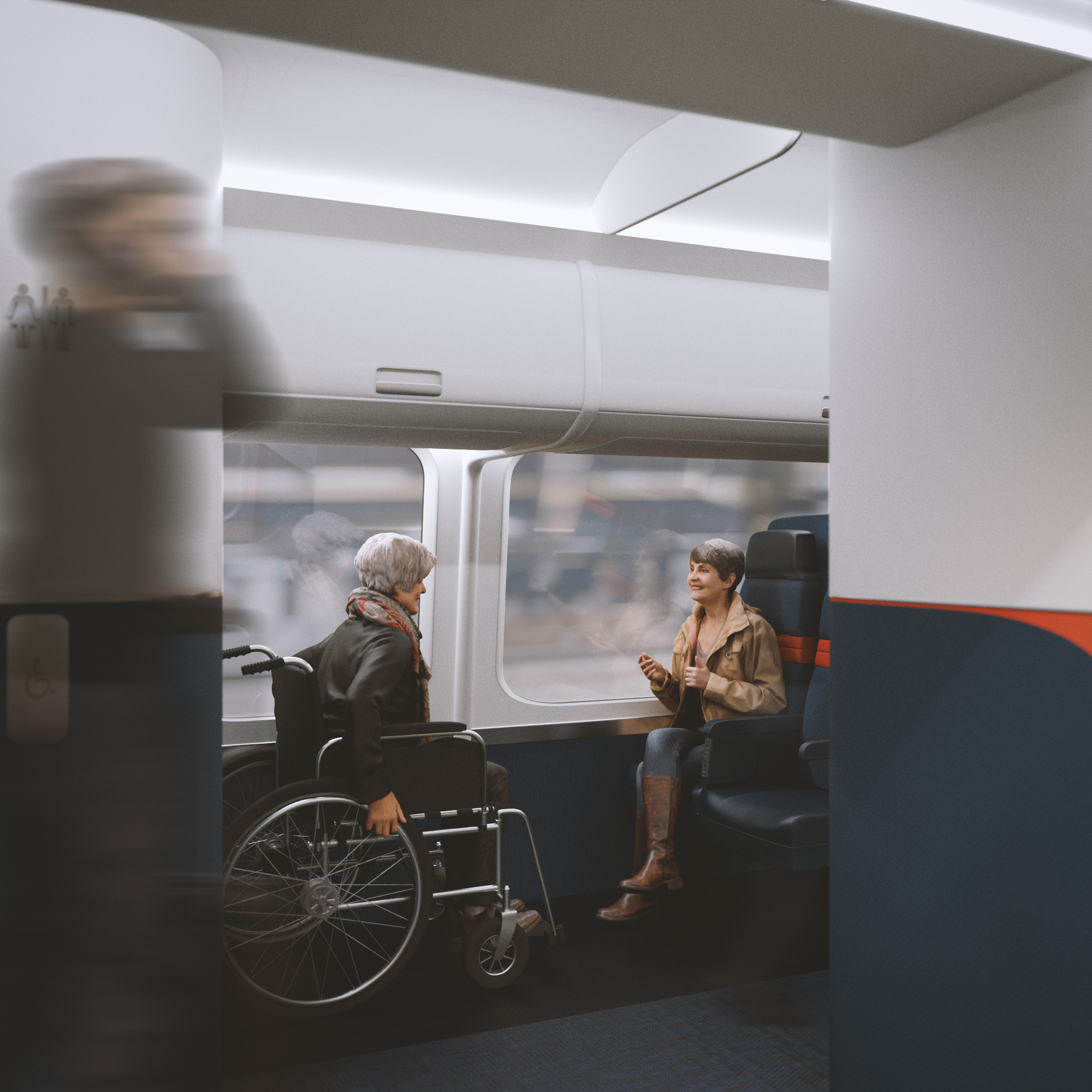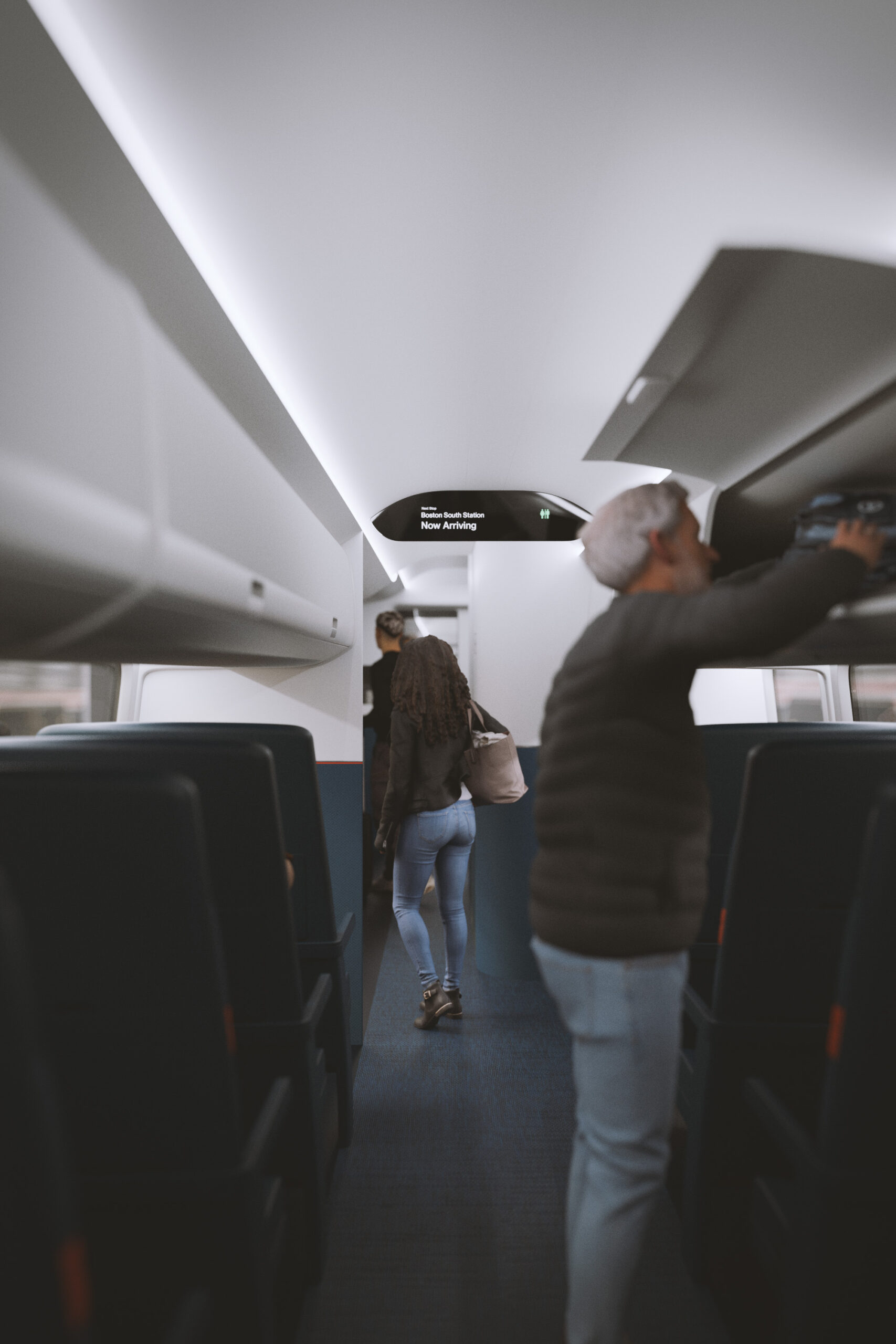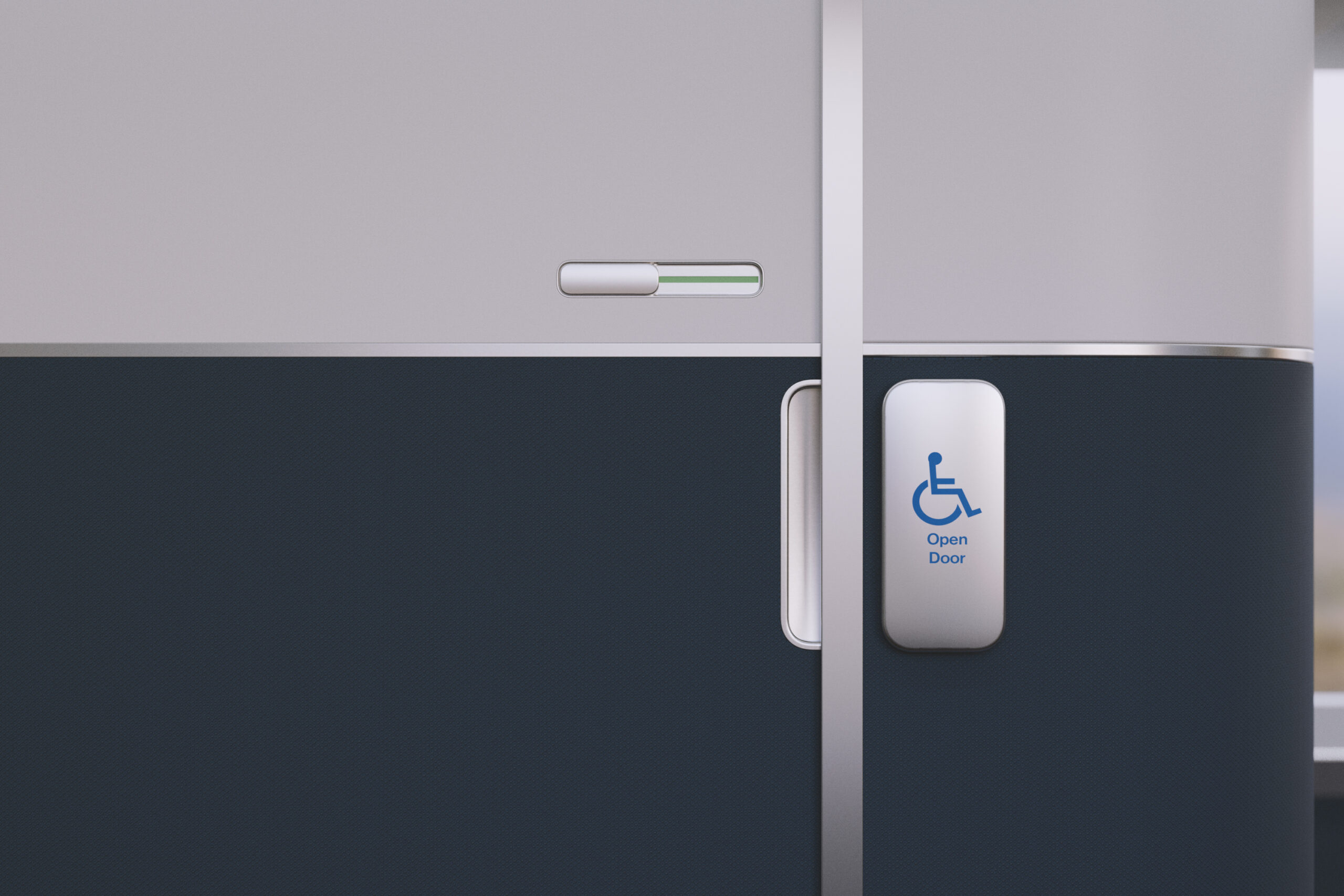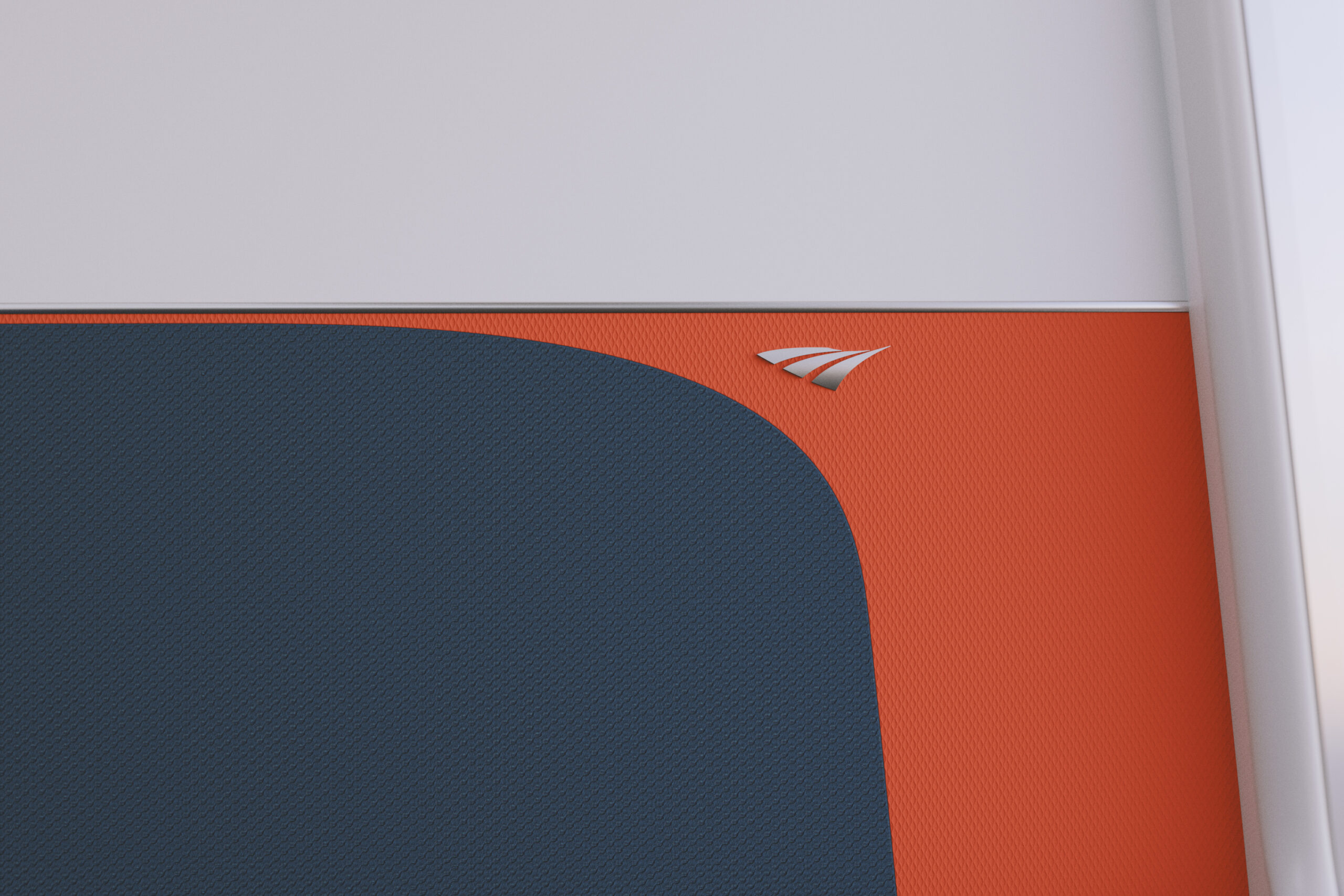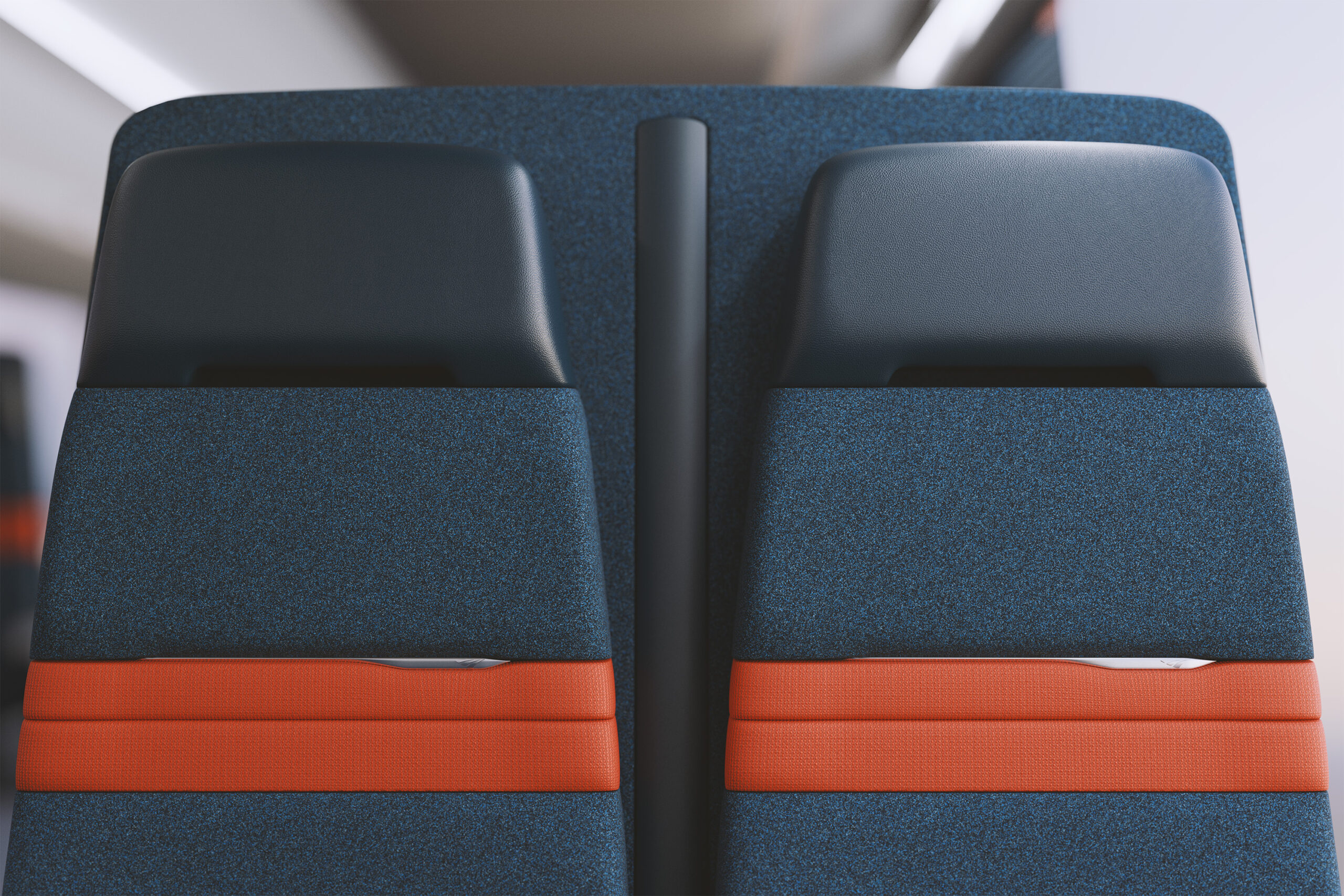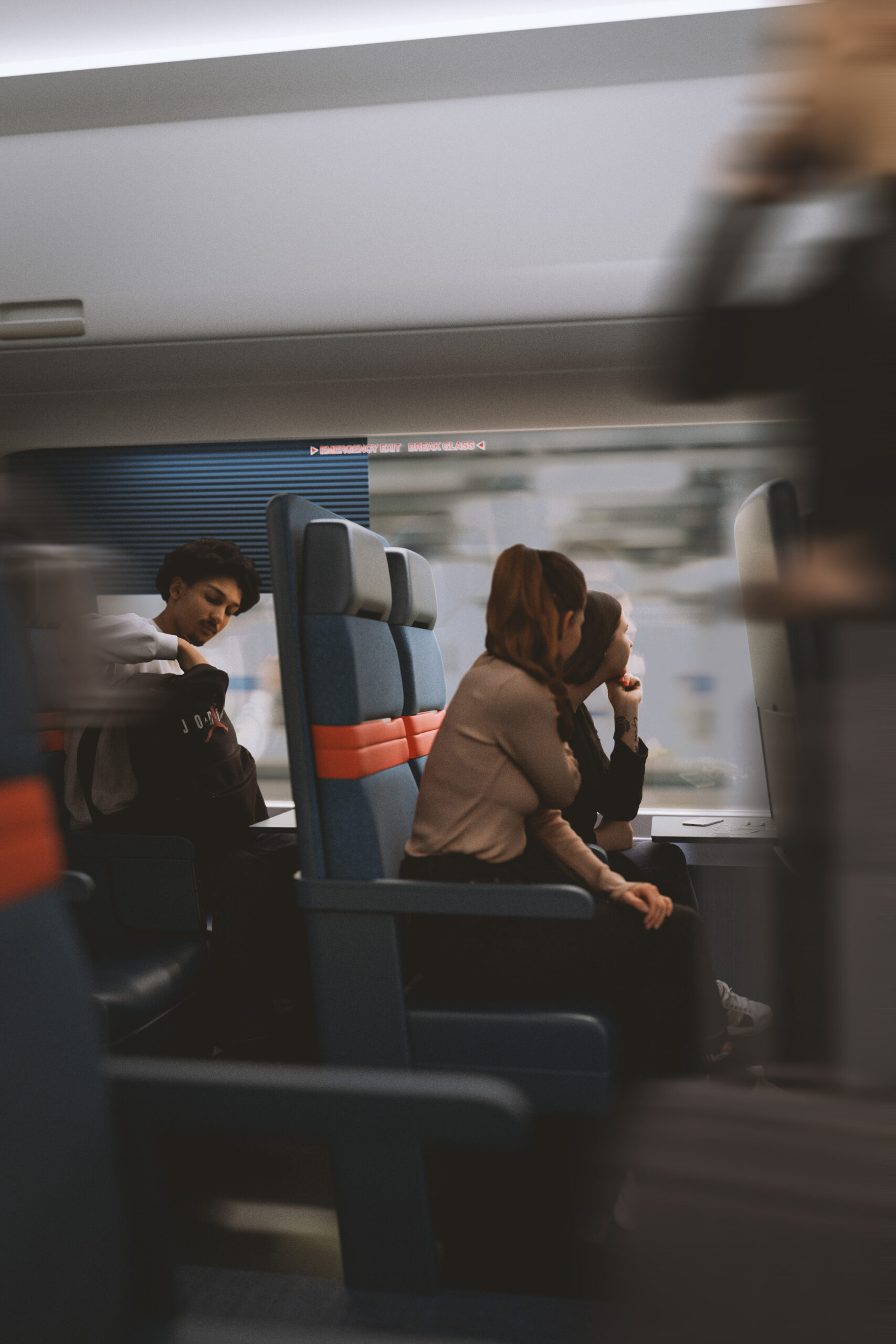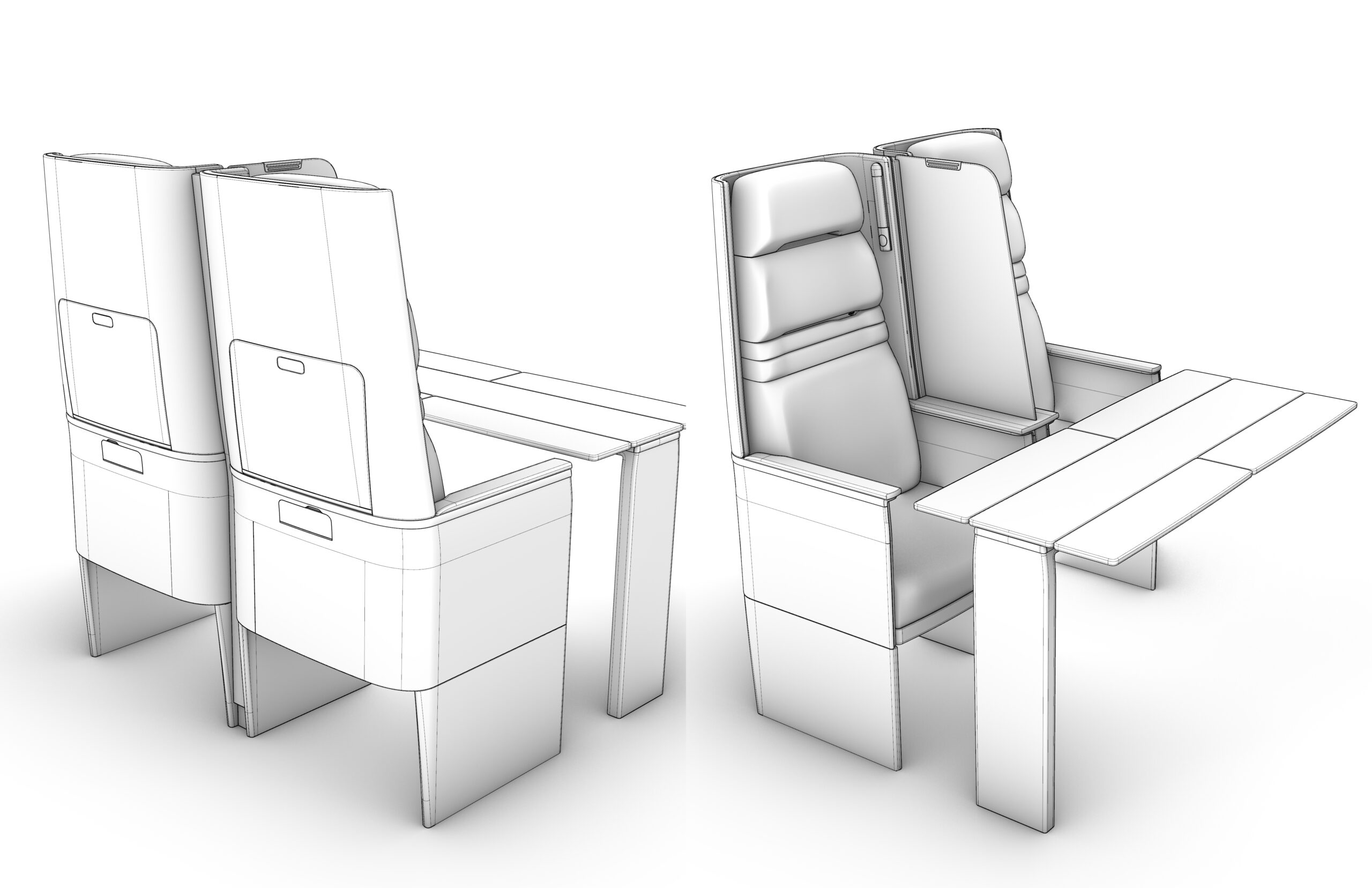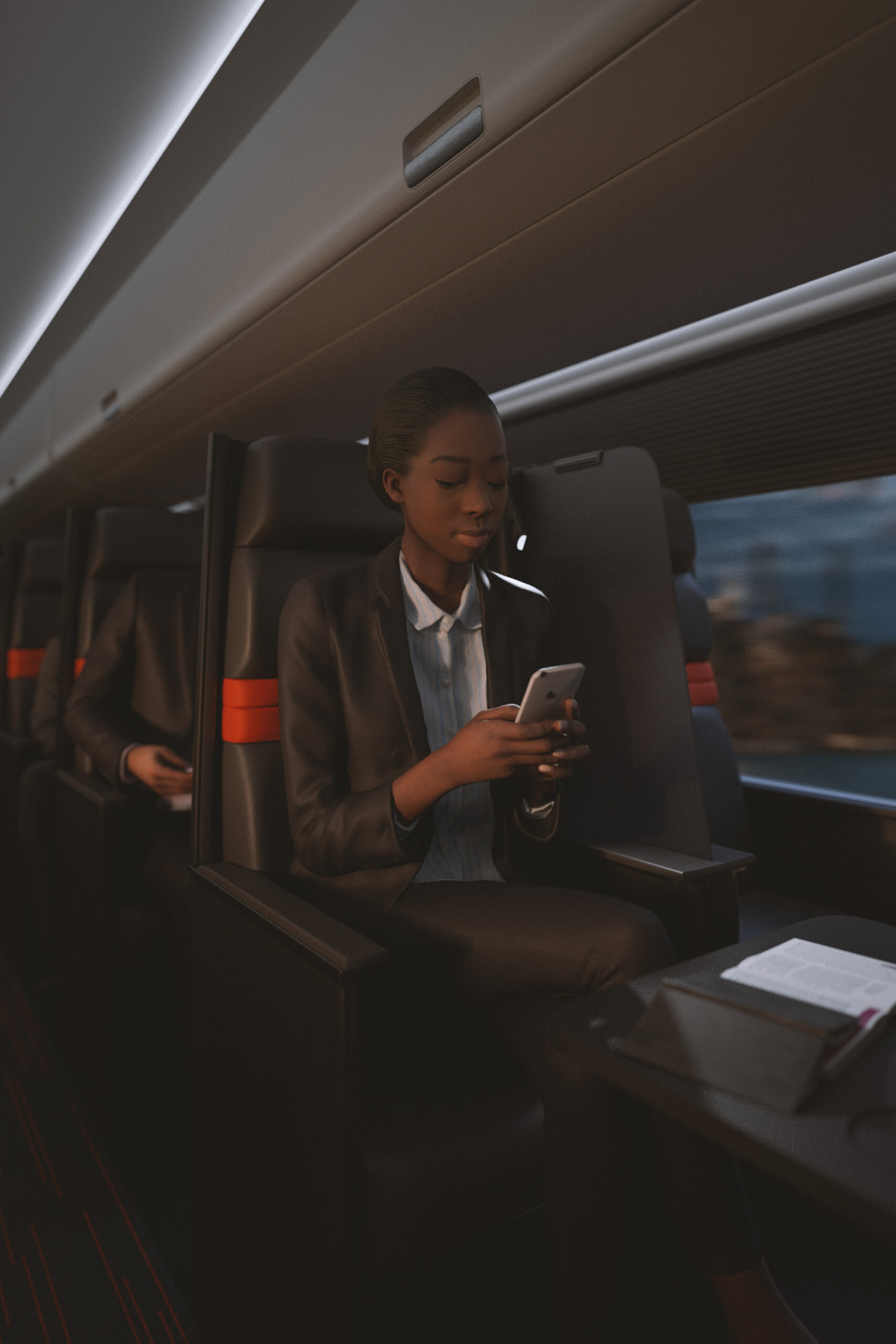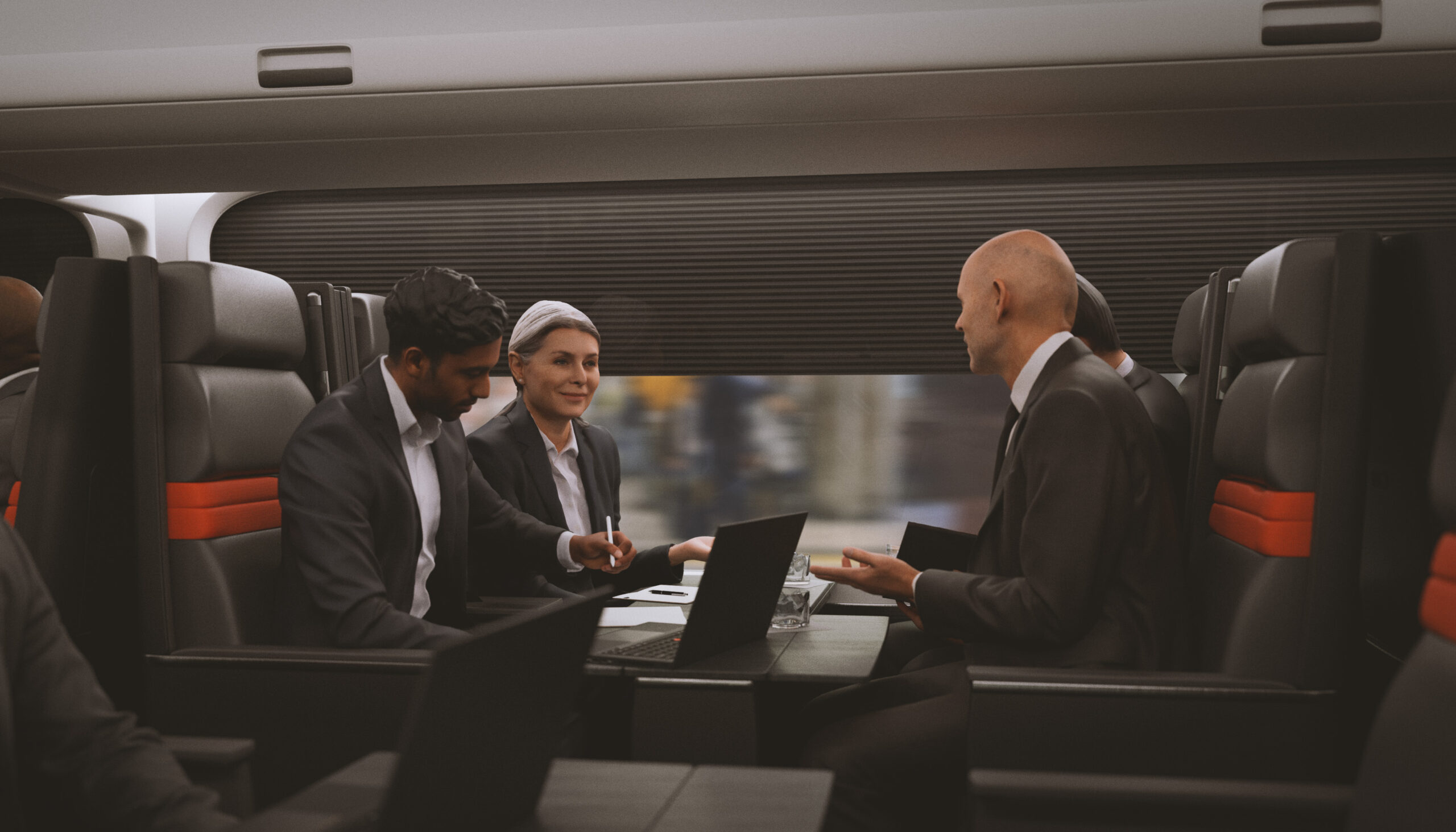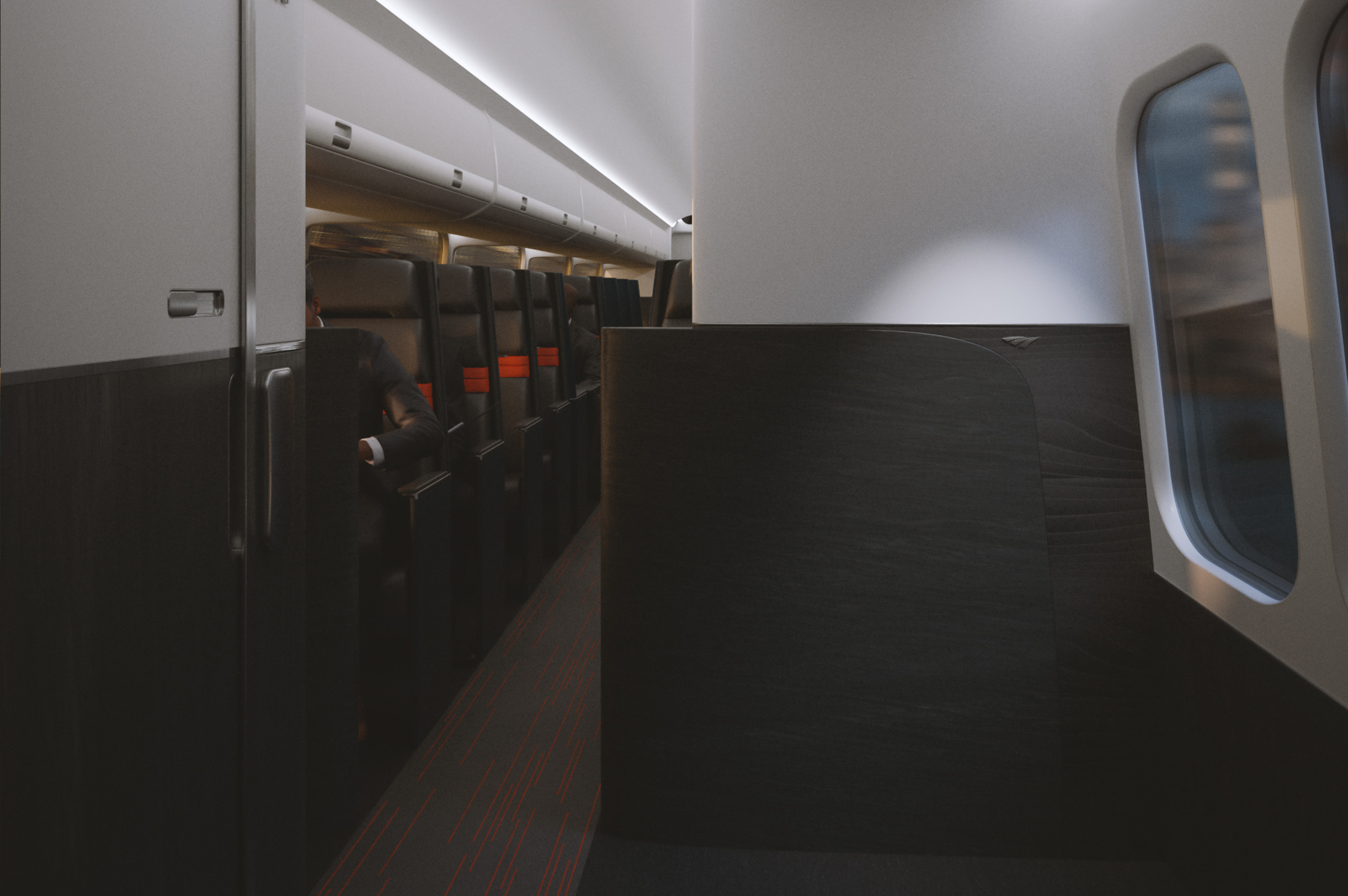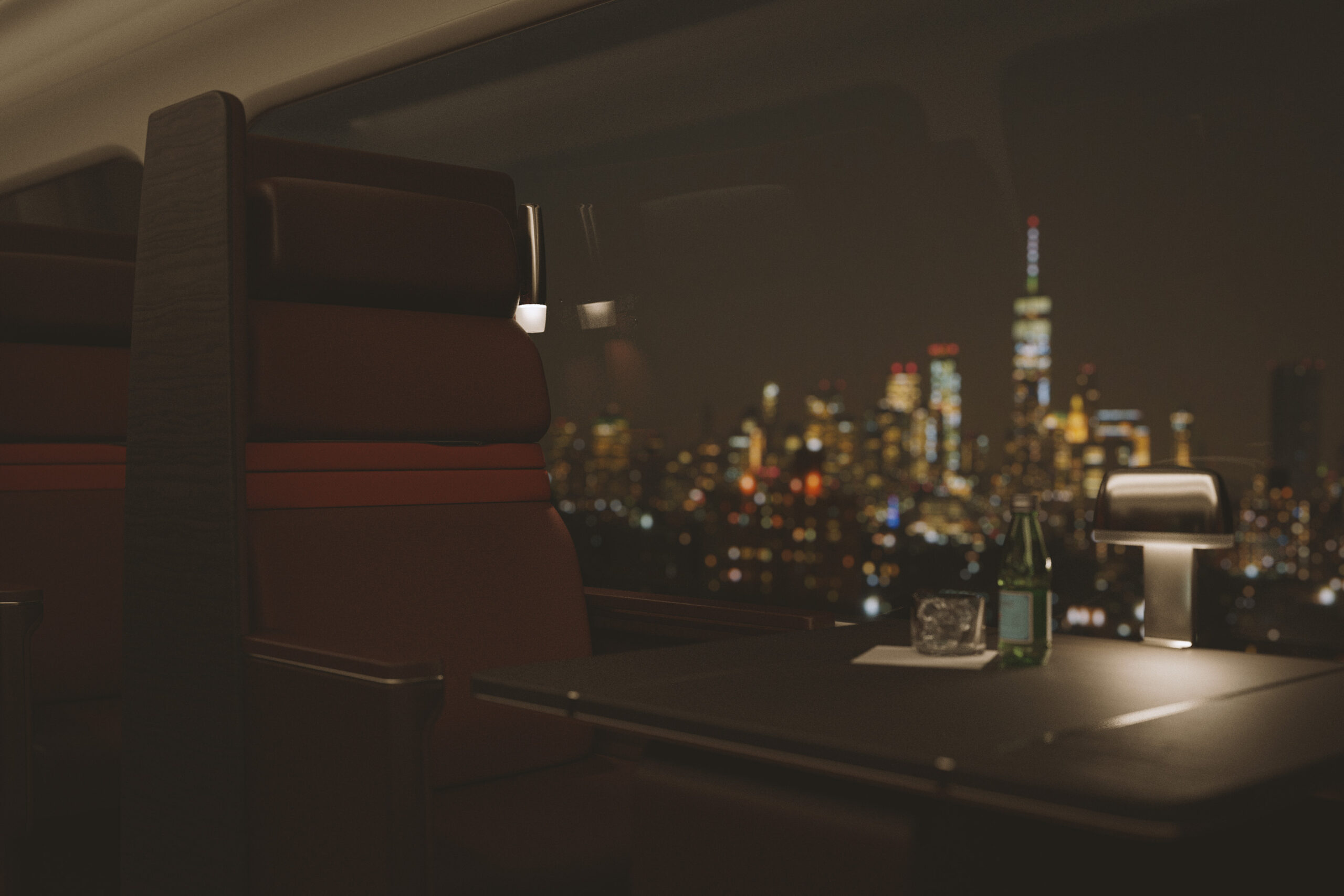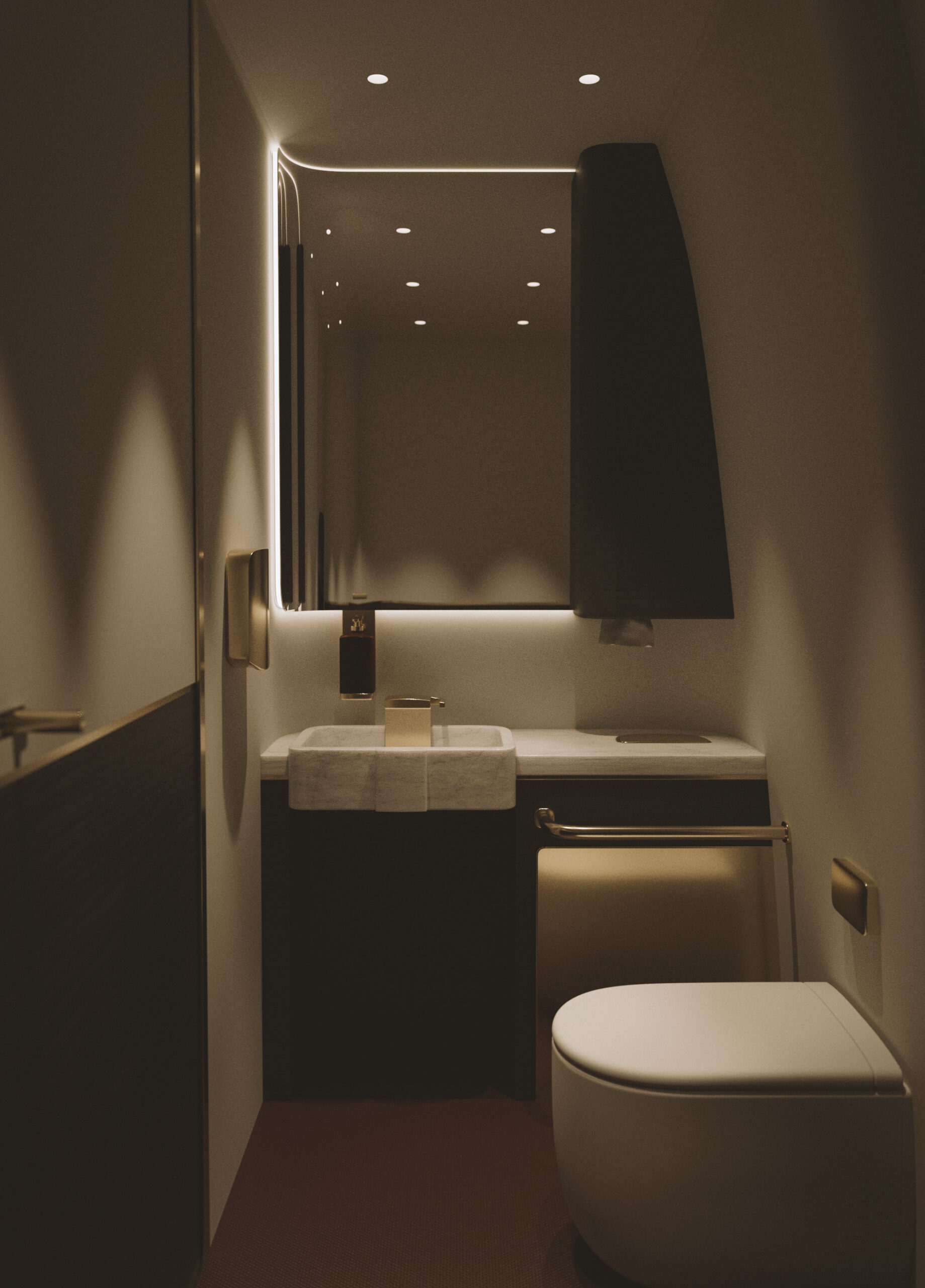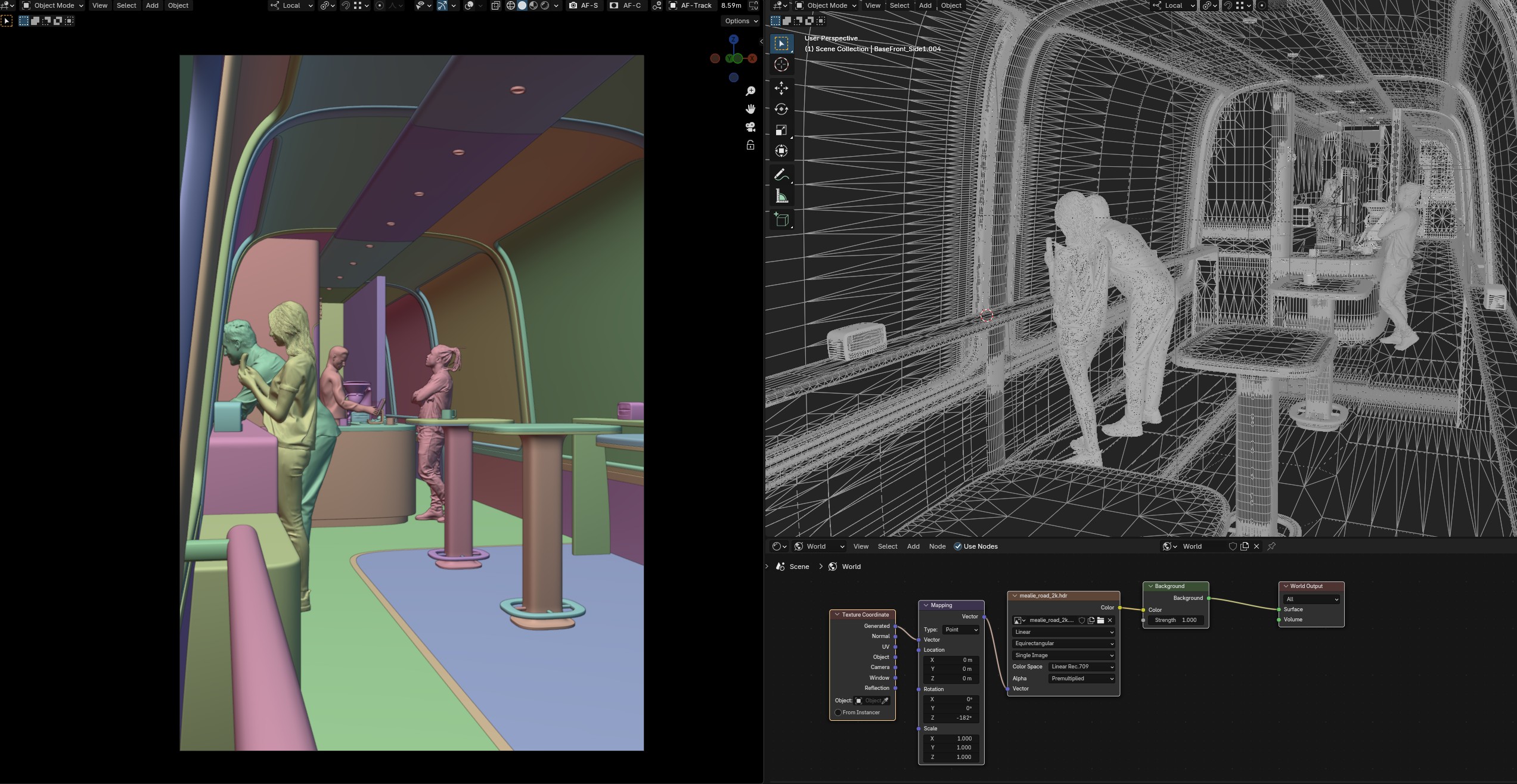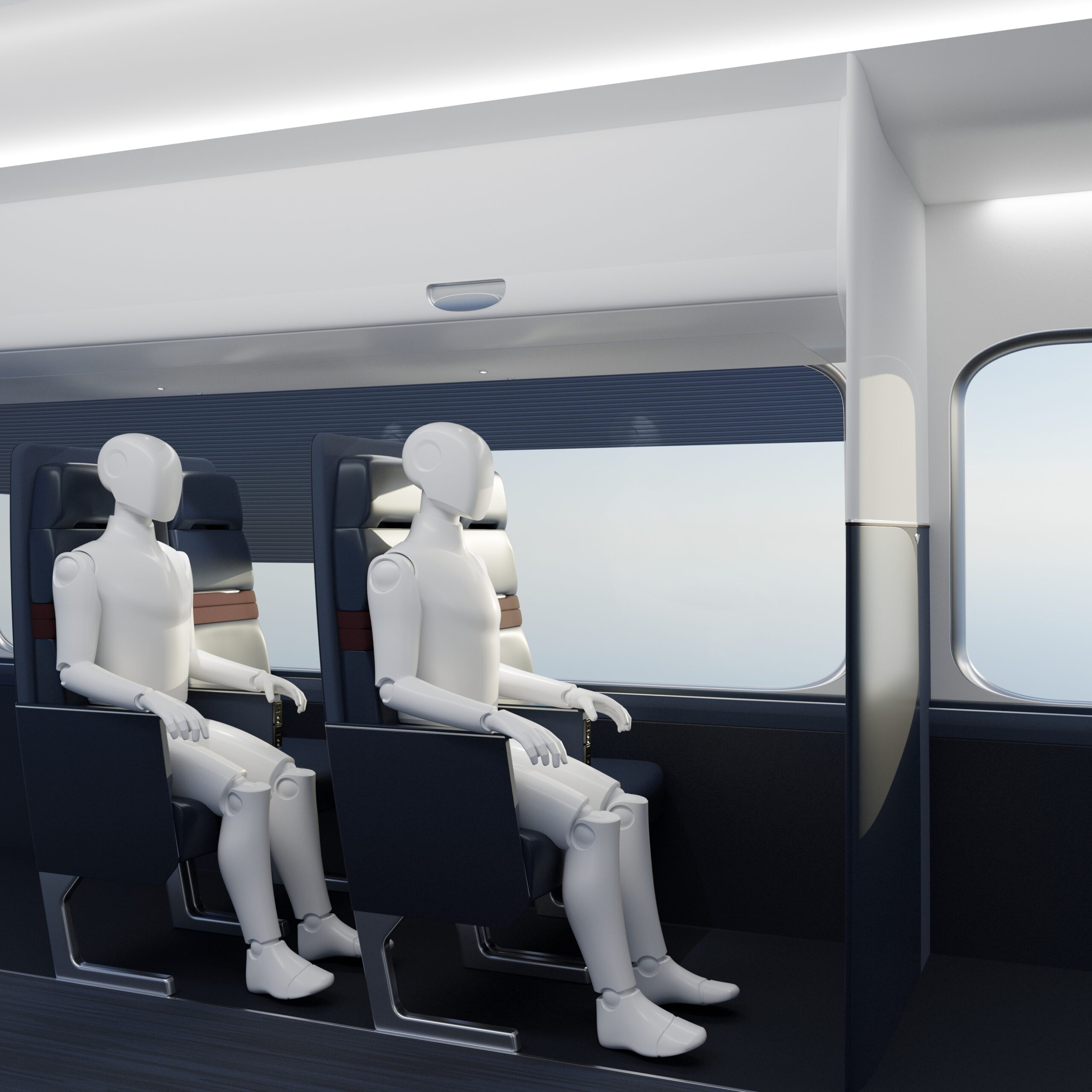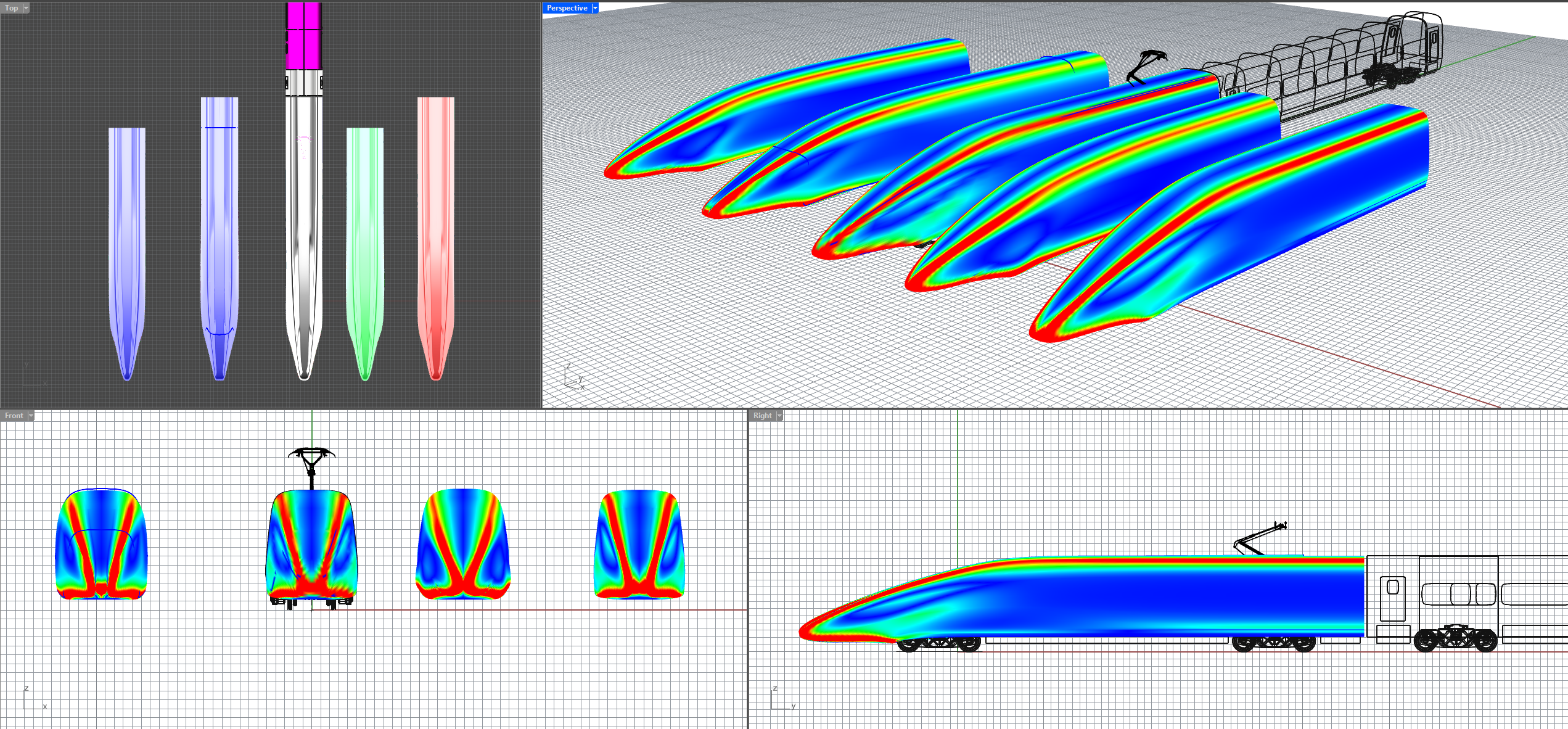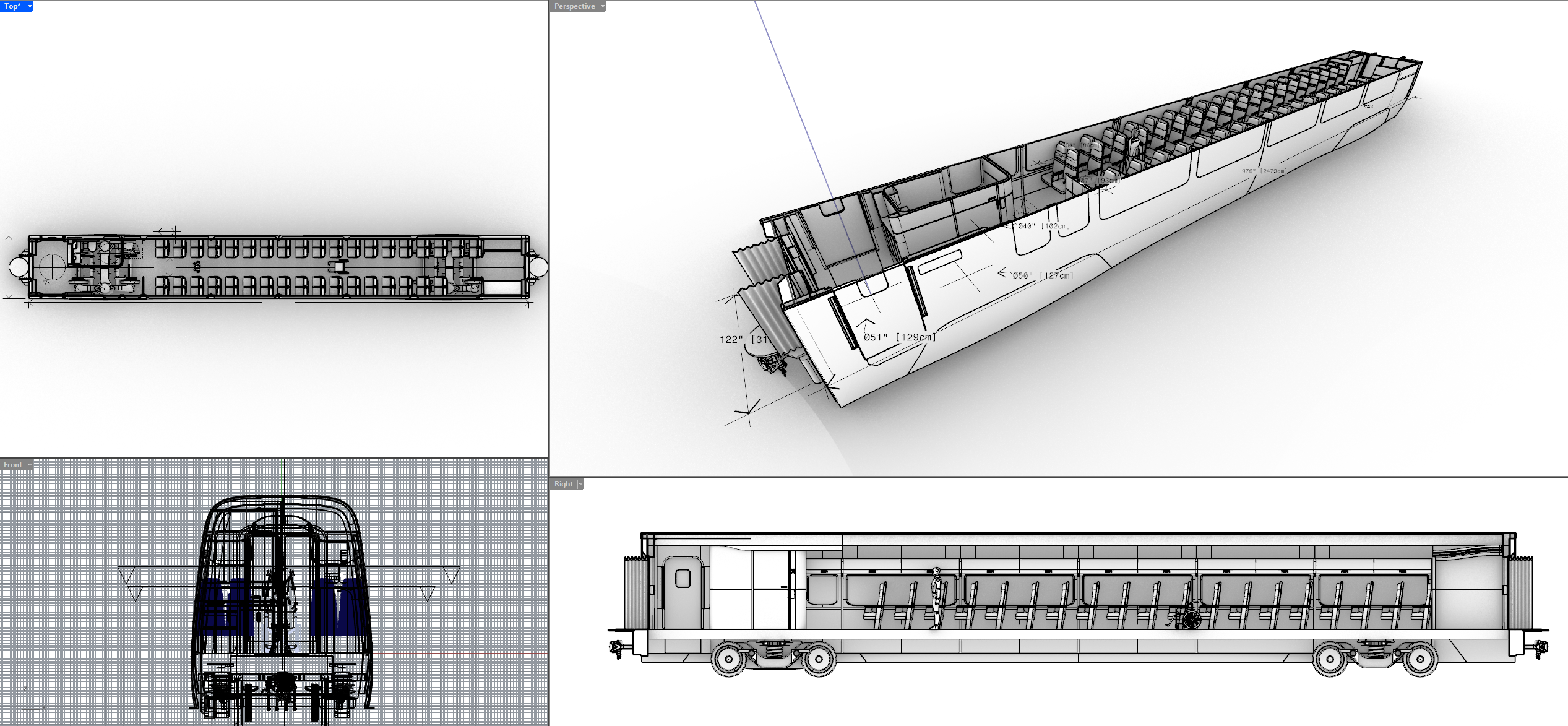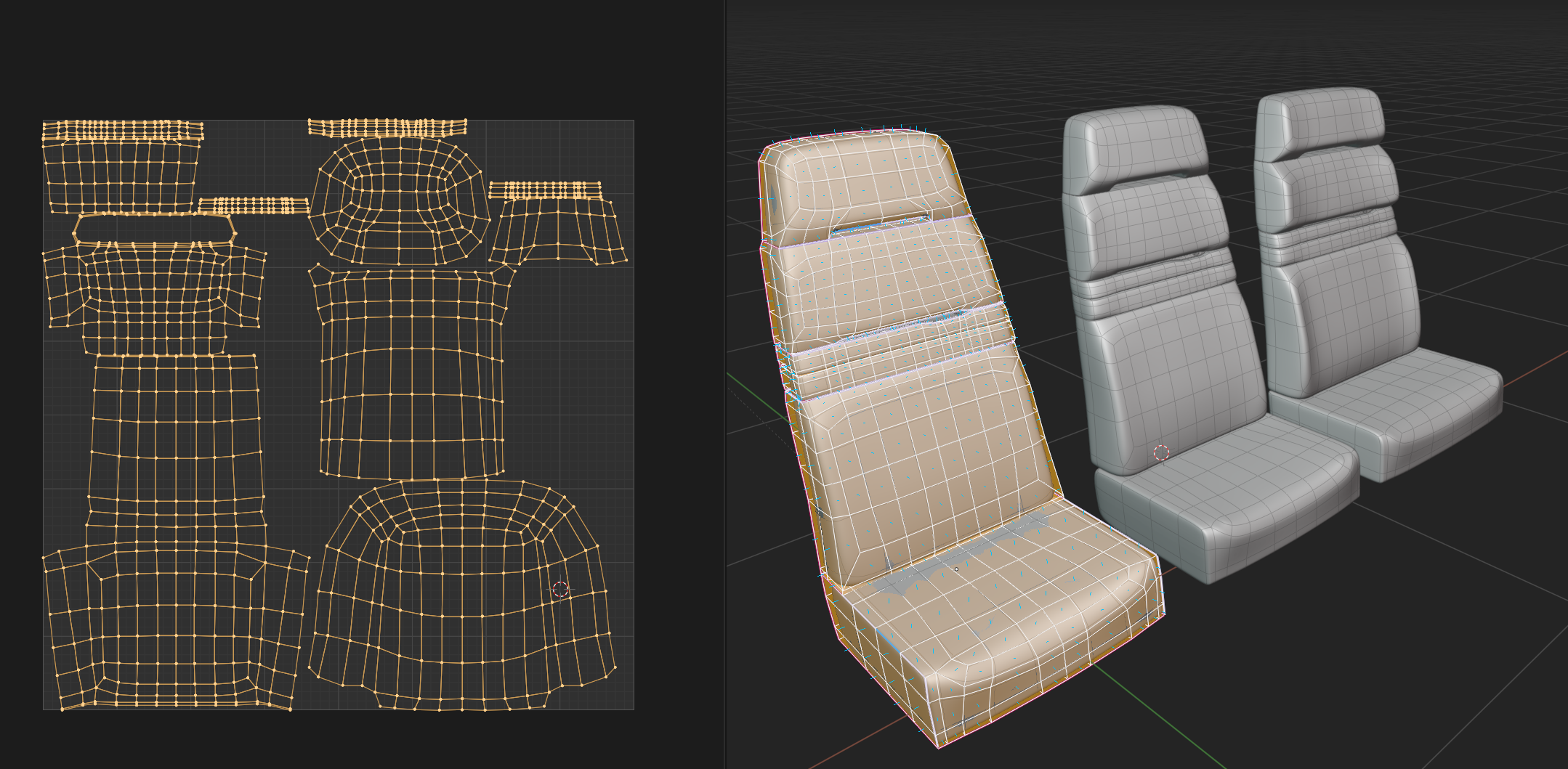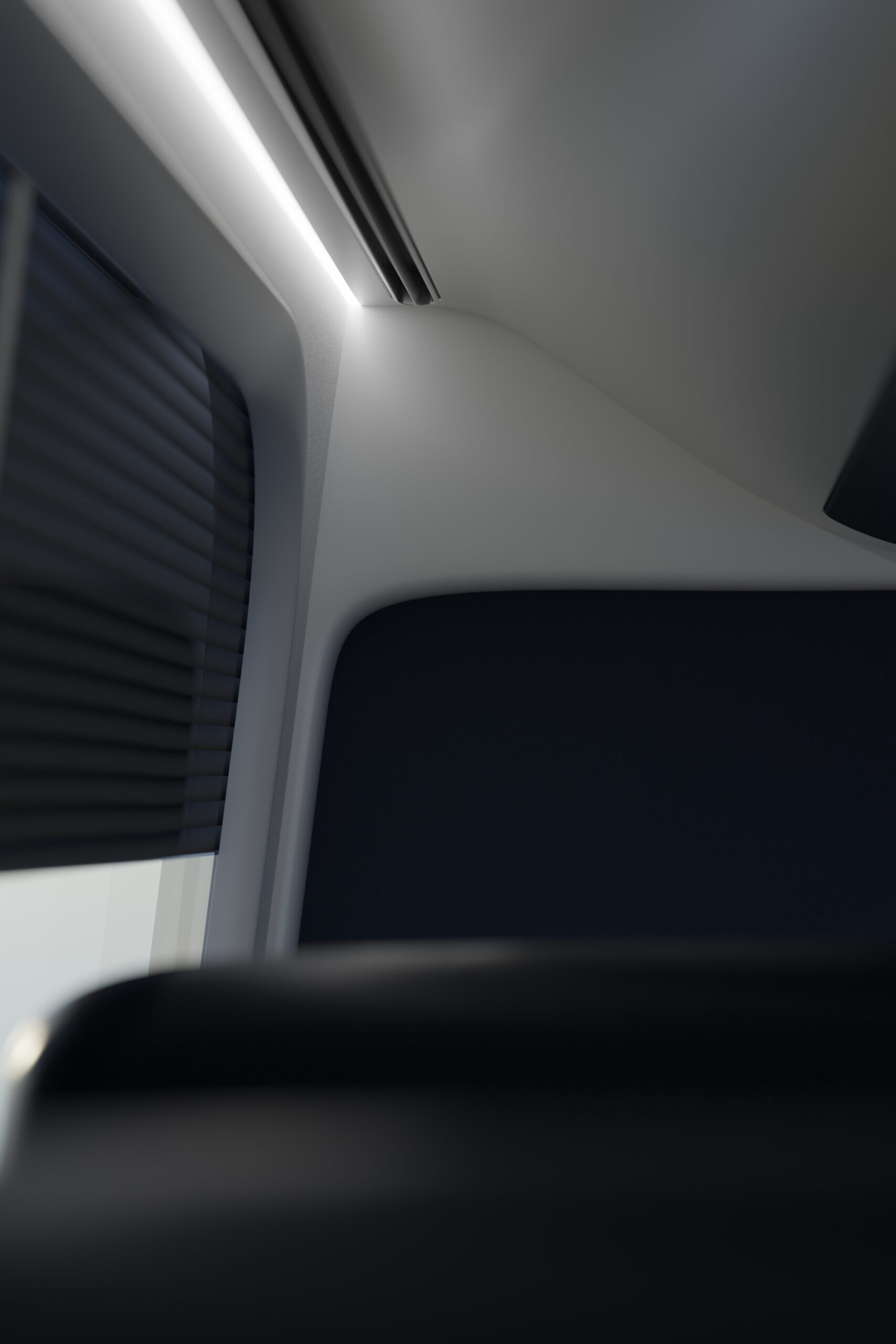Amtrak Columbia High Speed Rail
Concept Design
Passenger Accomodation Study
Project Background
In a sunnier, less chaotic timeline, America would have retained and progressed its dominance in passenger rail. The turn and early part of the American 20th century was marked by exponential growth and progress, all fueled by the unrivaled iron empires stretching across the continent. It was not just freight rail that defined industrial America: it was passenger transport, which reduced the massive expanse of a young, seemingly borderless country into states and cities, where anyone from anywhere in the world could pitch their tent and thrive.
The post-war dominance of the automobile, driven by automobile industry lobbying and preference for investment in roads and highways, as well as the advent of the jet age, would cause America’s rail dominance to fade into a few Class I consolidations that would keep freight rail relevant, but sunset most demand for passenger rail.
The 21st century has brought attention to the dramatic economic, environmental, and societal costs of America’s highway and airport addiction, and there has been movement in America for a passenger rail renaissance. The increasing inconvenience, discomfort, and expense of air travel for the broader public is as much a turnoff as its environmental damage. The increasing costs and physical dangers of driving a car are now as relevant to the consumer as the mind-numbing limbo of being caught in the increasing gridlock clogging America’s roads and highways.
The American passenger rail renaissance is already marked by several projects that intend to bring the world standard of high-speed rail, already intrinsic parts of economies in Asia and Europe, to stretch across America’s amber waves of grain. Brightline West, California High Speed, the new Avelia Liberty along the NEC, and even Texas- all projects that are suddenly closer to reality than the last 50 years of American rail decay would have us believe.
In thinking of how this renaissance in American rail building could continue to take shape, I saw one missing element: truly homegrown American high-speed passenger rail equipment. Early industrial America saw the rise of locomotive and passenger car innovation and manufacturing that influenced the evolution of rail technology worldwide- now, in the interest of economics and feasibility, America buys trainsets and equipment originally designed for very different railroad landscapes.
Putting on my purely aspirational rose-colored glasses, I took to imagining what an American-designed and American-built high-speed trainset could look like, both inside and out. The context would be a hypothetical national high-speed rail system administered by a forward-looking incarnation of Amtrak that every railfan dreams of: on time, well-funded, technologically advanced, and fast.
“...In our work on railroad cars…we set out to create the atmosphere and character of a fine club… As if by magic, the cars no longer had the appearance of a well-tilled cabbage field.”
“We have learned to visualize an interior of a public conveyance as a background that will sometimes be crowded, sometimes be half full, occasionally have only one or two persons in it, never be empty.”
-Henry Dreyfuss, "Designing for People"
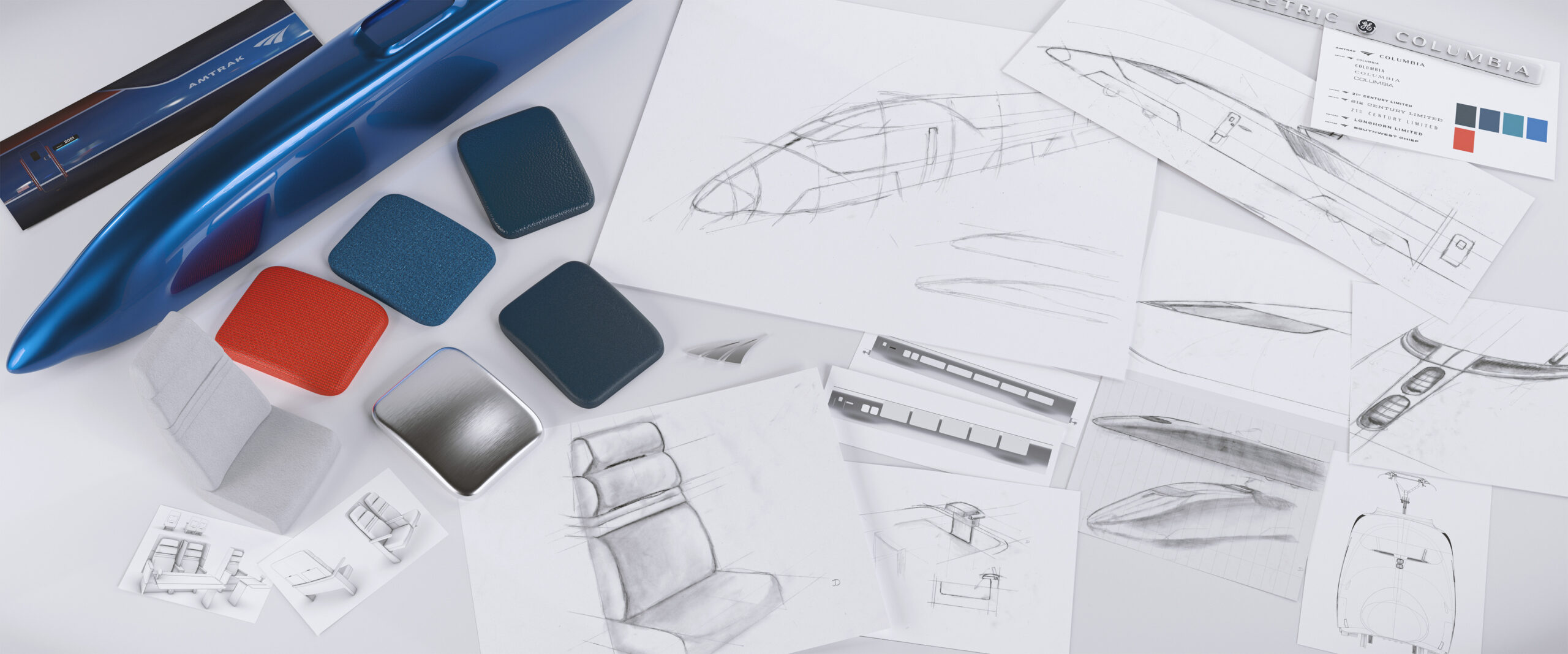

Coach Class
Columbia Coach’s seat offering is comparable in dimensions and pitch to a “premium economy” seat on a domestic airline, with the added benefits of ADA accessible aisles, and both large overhead bins and vestibule compartments for baggage.
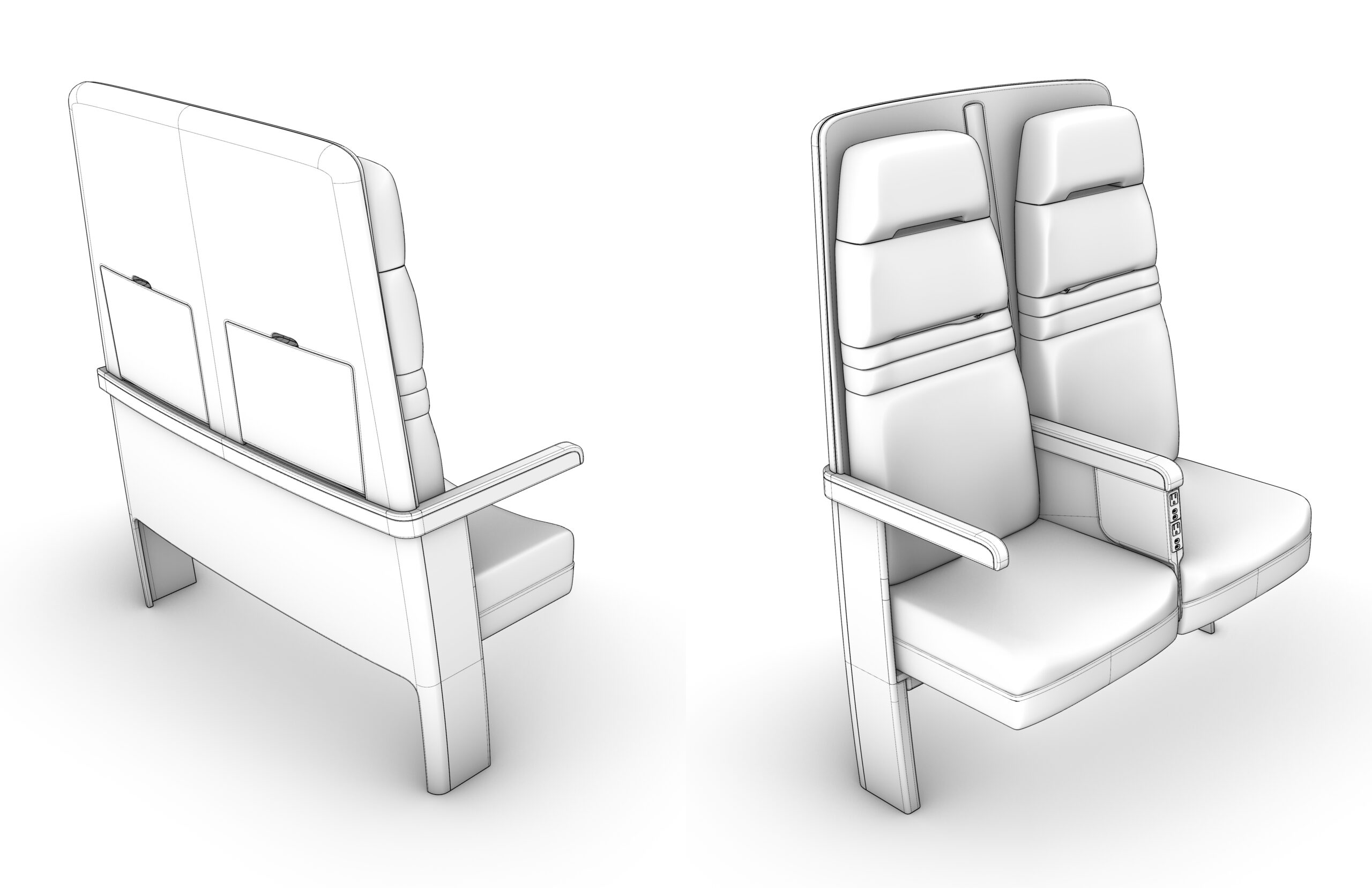

Business Class

First Class
In my research, I became enamored with the legendary 20th Century Limited, “The Most Famous Train in the World.” The New York Central’s flagship service from the East Coast to Chicago, it was a crowning achievement in American passenger rail. The Columbia first class offering seemed like a fitting place for an homage to Dreyfuss’ “club” on rails, and hence a concept for a “21st Century Limited” emerged.
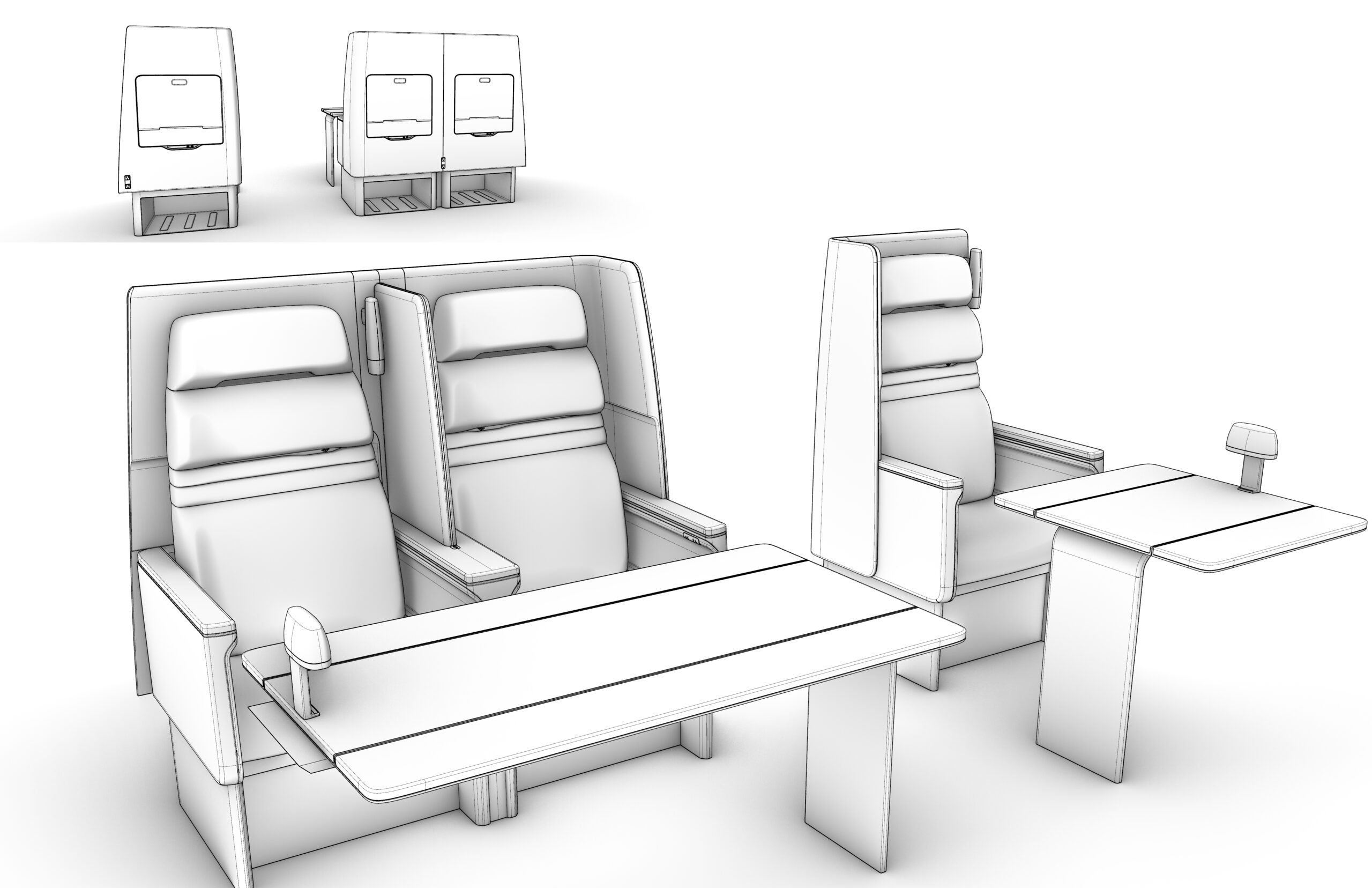

Observation Car
One of the signature experiences offered by Amtrak are the Superliner observation cars, utilized on routes that offer scenic vistas only rail can offer. The Columbia’s observation cars maximize window real estate and provide fully accessible lounge & dining spaces at either end of the Cafe Car.

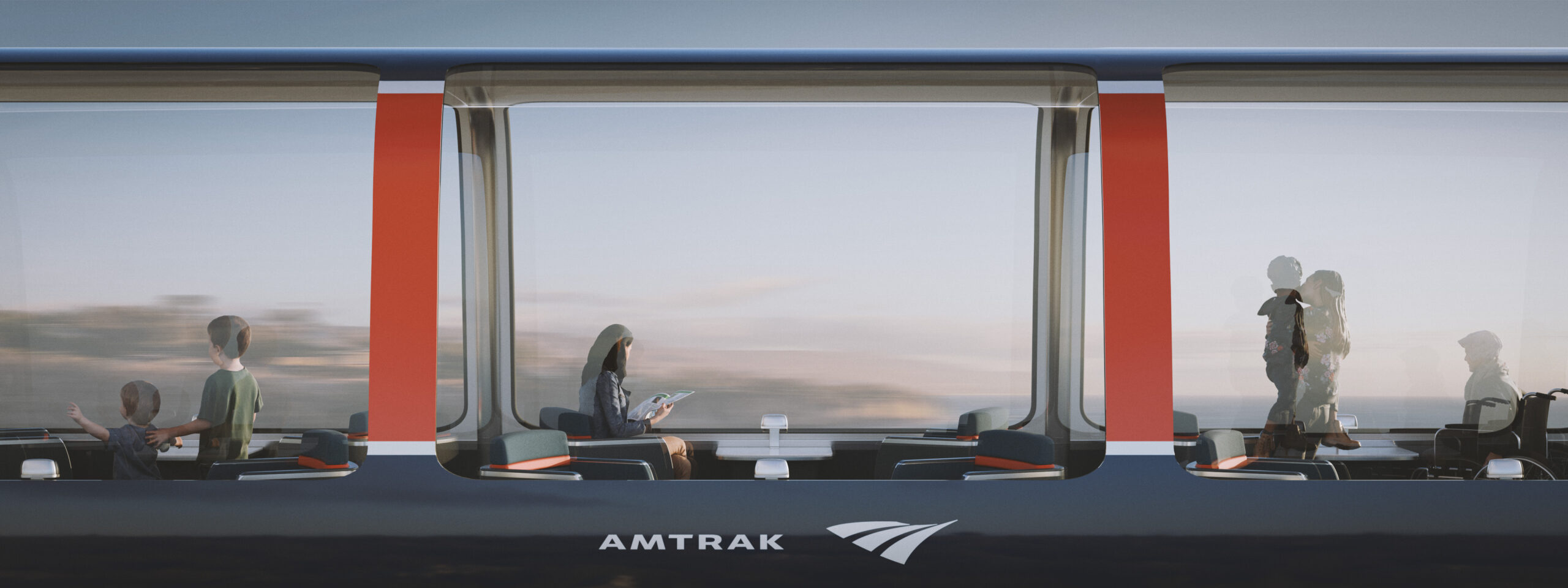
Cafe Car
The Cafe Car offers a place for train brand identity to come to the forefront and engage passengers in a communal setting. Iconic furniture and architecture cements the train’s design language for all classes of passenger.

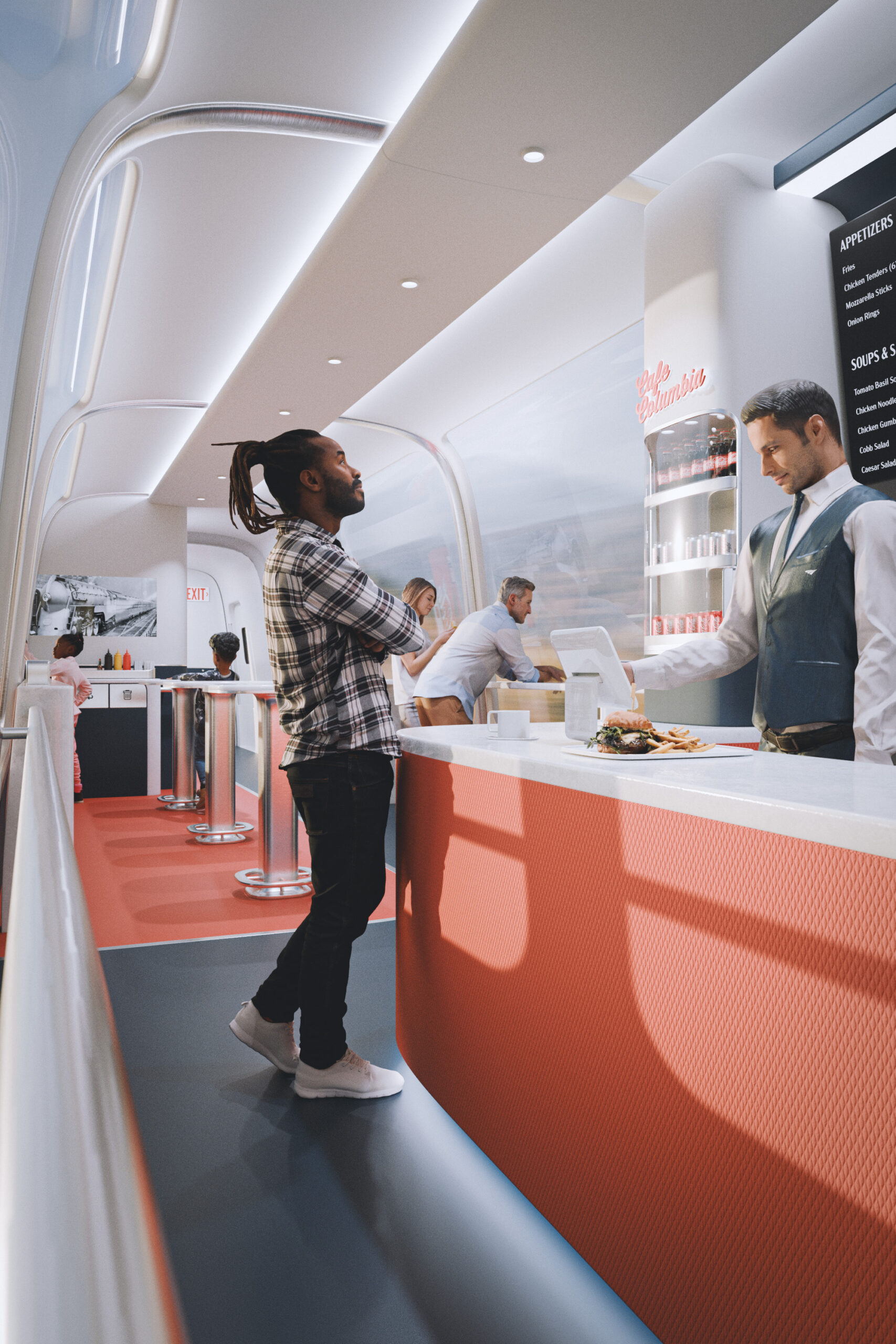
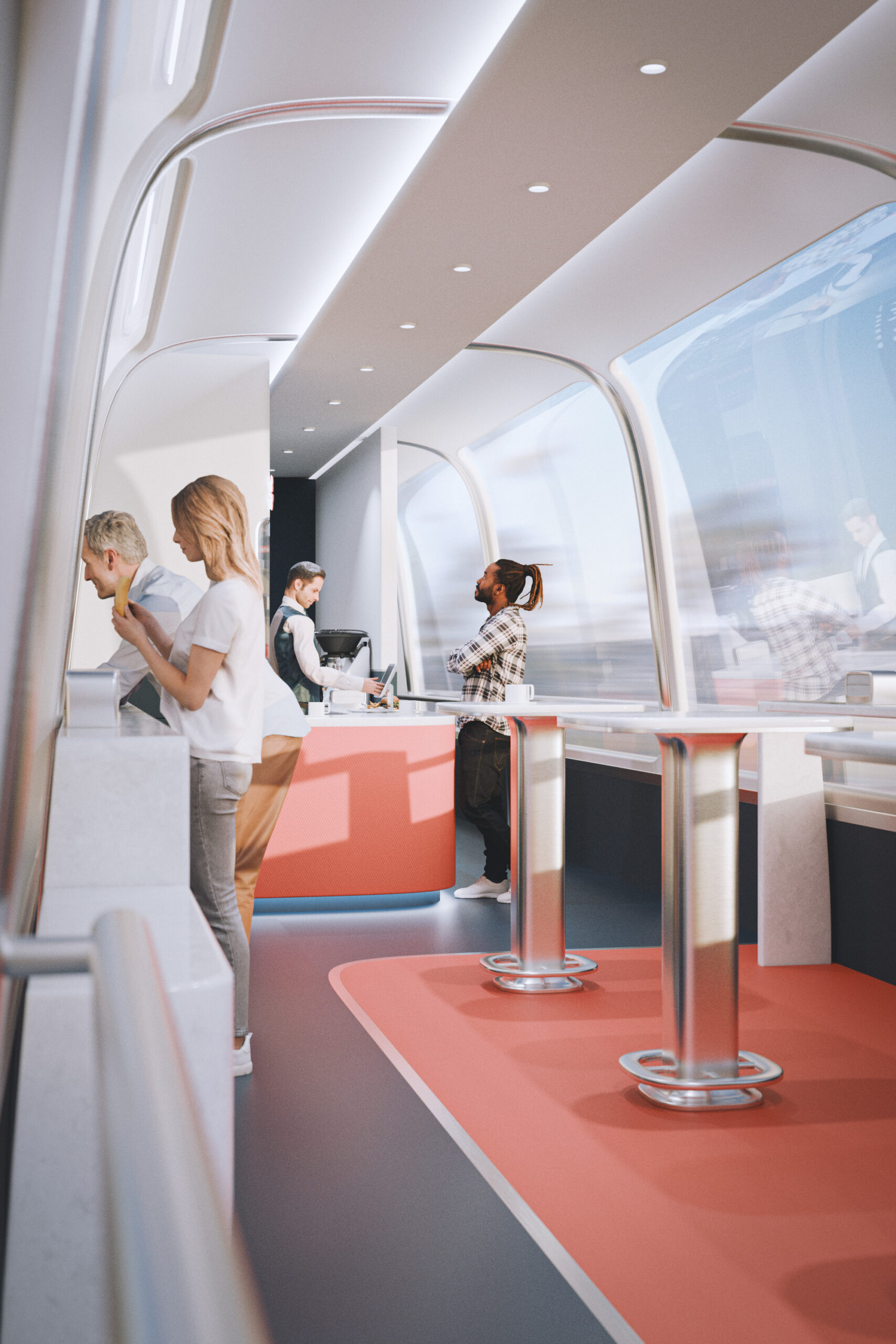
Tools Used

Plasticity, Blender, Rhino, Substance Suite, Adobe Creative Suite. No AI was used in this project.
(c) 2025 Joseph Donovan Design
